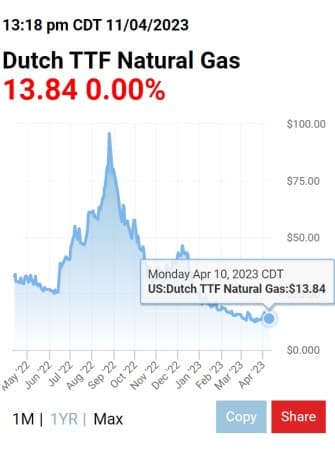
- Exceptionally warm winter of 2022/2023 reduced gas demand in Europe.
- Europe’s shortsighted LNG procurement strategies could cause problems later this year.
- Rising gas demand in Asia could lead to a more competitive LNG spot market this year.
During the last couple of weeks, European energy giants such as Shell and RWE have been reaching a stalemate in long-term contract negotiations with LNG supplier QatarEnergy. RWE, for example, is said to be at odds with QatarEnergy, based on the length of the proposed deal. Doha is looking to close a 25-year supply deal, while German parties only want to commit to 10-15 years, in line with the German goal to phase out natural gas completely by 2043. Doha could be willing to sign short-term contracts but at a hefty premium. The German example doesn’t stand on its own, as other major gas importers, such as the Netherlands, aren’t willing to commit to longer contract periods either. The short-term contracts may lead to the accomplishment of certain climate goals, but the consumer is bound to foot the bill for these policies.
By Cyril Widdershoven for Oilprice.com










